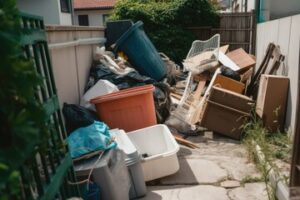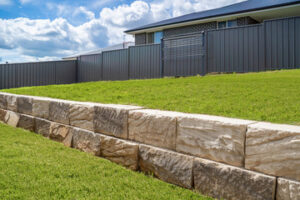Junk Removal Temecula CA is essential for maintaining a clean and organized environment. Accumulated clutter can affect both physical and mental well-being.

Removing junk creates more space and improves the overall atmosphere of a home or workplace. Efficient removal strategies ensure that waste is handled properly and responsibly.
Clutter builds up quickly in modern living spaces. Unused furniture, old appliances, and random items often pile up over time. Finding the right method to dispose of these items can be challenging. Professional junk removal services simplify the process and ensure that everything is handled appropriately.
Sorting junk is the first step in the removal process. Separating recyclable materials from general waste reduces landfill contributions. Proper sorting also allows valuable materials to be recovered and reused. This approach supports both environmental sustainability and efficient waste management.
Electronic waste presents unique challenges in junk removal. Old computers, televisions, and cell phones contain harmful components that require special handling. Improper disposal can lead to environmental contamination. Professional junk removal services ensure that electronic waste is recycled or disposed of safely.
Furniture removal requires careful handling to prevent damage to property. Large pieces are often difficult to move without proper equipment. Disassembly and strategic removal make the process more manageable. Donating or recycling usable furniture reduces waste and benefits the community.
Construction debris removal involves heavy and hazardous materials. Broken concrete, wood scraps, and metal pieces must be handled with care. Professional removal teams have the equipment and expertise to manage construction waste safely. Proper disposal ensures compliance with local regulations.
Yard waste removal helps maintain a tidy outdoor space. Fallen branches, leaves, and grass clippings can create an unsightly mess. Organic waste can be composted or processed into mulch. This reduces landfill waste and supports healthy plant growth.
Hoarding situations require sensitive and strategic junk removal. Excessive clutter can create safety hazards and health risks. Trained removal specialists handle hoarding cases with discretion and care. Gradual removal and cleaning restore the space to a livable condition.
Hazardous waste removal involves strict safety protocols. Paint, chemicals, and cleaning products contain toxic substances that require proper disposal. Special containers and protective gear prevent leaks and exposure. Licensed disposal facilities handle hazardous materials according to environmental regulations.
Junk removal during property cleanouts requires thorough planning. Estate cleanouts, eviction clearances, and foreclosure cleanups often involve large volumes of waste. Professional teams work efficiently to clear the property and prepare it for the next phase. Timely removal reduces holding costs and restores property value.
Commercial junk removal supports business operations. Offices, retail stores, and warehouses generate waste that needs regular disposal. Removing outdated furniture, broken equipment, and packaging materials improves workspace efficiency. Clean and organized business spaces enhance employee productivity and customer experience.
Appliance removal ensures that old machines are handled responsibly. Refrigerators, washing machines, and stoves contain materials that can be recycled. Professional removal teams disconnect and transport appliances safely. Recycling metal and plastic components reduces waste and conserves resources.
Mattress removal requires special handling due to size and material composition. Old mattresses take up significant landfill space if not recycled. Removing and recycling mattress components reduces waste and supports sustainability. Specialized facilities extract metal, foam, and fabric for reuse.
Junk removal for storage units helps reclaim valuable space. Abandoned or forgotten items often accumulate in storage facilities. Clearing out unused belongings allows for better organization and use of storage space. Professional removal teams handle the process efficiently and carefully.
Event cleanup involves large-scale junk removal. Concerts, festivals, and sporting events generate significant waste. Fast and thorough cleanup restores the venue to its original state. Effective waste sorting and recycling reduce environmental impact.
Donation-based junk removal benefits both the environment and the community. Usable furniture, clothing, and household items are collected and redistributed. This reduces landfill contributions and supports charitable organizations. Donating items extends their lifespan and helps those in need.
Estate sale preparation often includes junk removal. Clearing out unneeded items before a sale increases the value of remaining assets. Professional removal teams work quickly to sort, remove, and clean the space. Efficient preparation enhances the success of the sale.
Scrap metal removal requires specialized knowledge and equipment. Metal components from appliances, furniture, and construction materials can be recycled. Sorting and processing scrap metal reduces waste and supports the recycling industry. Proper handling prevents injury and contamination.
Paper and document shredding ensure secure disposal of sensitive materials. Offices and businesses generate large volumes of paperwork that require protection. Professional shredding services guarantee that confidential information is destroyed. Secure disposal prevents identity theft and data breaches.
Junk removal for remodeling projects clears out construction debris and old fixtures. Cabinets, flooring, and countertops are often discarded during renovations. Professional removal teams ensure that waste is sorted and disposed of properly. Recycling building materials reduces environmental impact.
Removal of bulky items requires specialized equipment and expertise. Couches, desks, and shelving units are heavy and difficult to transport. Professional teams use dollies, straps, and lifting techniques to move bulky items safely. Proper removal protects floors and walls from damage.
Eco-friendly junk removal focuses on reducing waste and maximizing recycling. Sorting materials at the source improves recycling rates. Professional removal companies prioritize environmentally responsible practices. Sustainable disposal methods minimize landfill contributions.
Vehicle removal includes handling cars, motorcycles, and recreational vehicles. Non-operational vehicles take up valuable space and create environmental hazards. Professional removal teams tow and process vehicles for recycling. Extracting metal and reusable parts reduces waste and supports the automotive industry.
Illegal dumping cleanup requires quick response and proper handling. Abandoned waste on public or private property creates health and environmental risks. Professional removal teams clear the site and ensure proper disposal. Preventing future dumping involves increased surveillance and enforcement.
Junk removal for home organization projects improves overall functionality. Removing excess items creates more usable space. Decluttering enhances mental clarity and reduces stress. Professional removal services simplify the process and ensure proper disposal.
Commercial property cleanouts involve large-scale waste removal. Retail stores, office buildings, and industrial sites generate significant volumes of waste. Efficient removal improves the property’s appearance and functionality. Proper disposal ensures compliance with local regulations and environmental standards.
Foreclosure cleanouts require quick and thorough junk removal. Abandoned properties often contain large volumes of waste. Professional removal teams clear the site and prepare it for resale. Fast and efficient cleanup enhances property value and marketability.
Demolition debris removal involves handling heavy and hazardous materials. Broken concrete, glass, and wood require careful handling and proper disposal. Professional teams use specialized equipment to clear the site. Recycling building materials reduces waste and supports sustainable practices.
Junk removal for residential moves helps simplify the relocation process. Removing unwanted furniture, appliances, and household items reduces moving costs. Professional teams handle the sorting, removal, and disposal. Streamlined moves reduce stress and improve efficiency.
Storm debris removal restores order after natural disasters. Fallen trees, roof materials, and household items create hazardous conditions. Professional removal teams work quickly to clear debris and secure the site. Fast response reduces further damage and supports recovery efforts.
Junk removal for storage facilities maximizes available space. Unclaimed or abandoned items often occupy valuable storage units. Clearing out unused belongings allows for better facility management. Professional removal teams handle the process efficiently and securely.
Junk removal improves both residential and commercial environments. Efficient handling of waste reduces clutter and enhances functionality. Professional services simplify the process and ensure proper disposal. A clean and organized space improves overall comfort and productivity.








